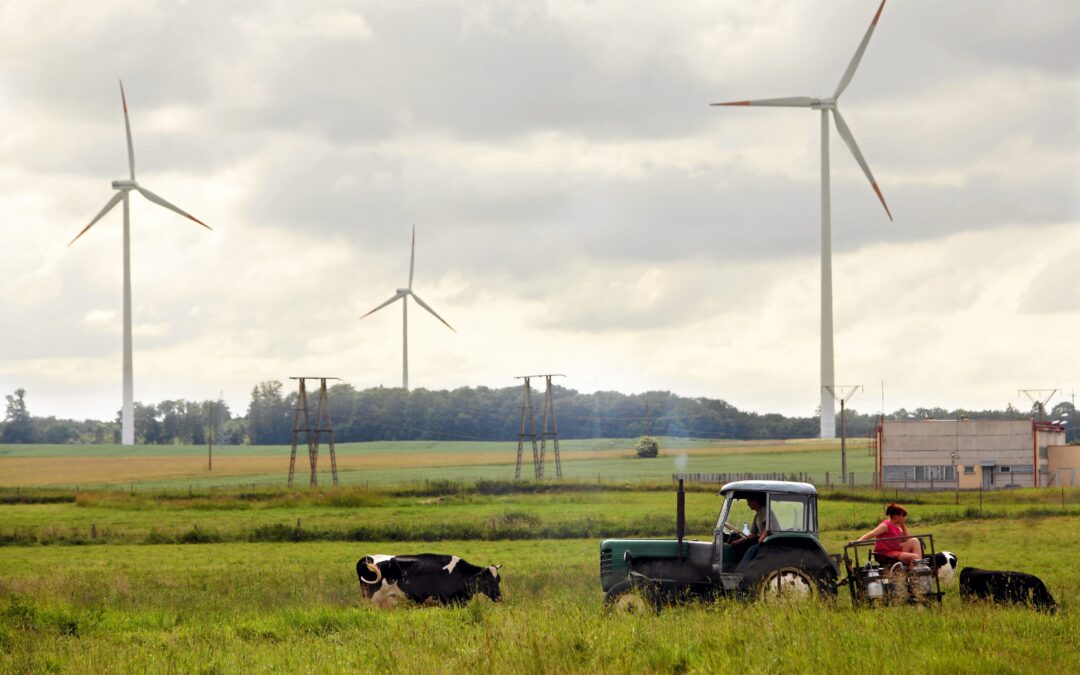Poland generated a record amount of energy from wind in January, with turbines meeting around a third of the country’s electricity needs at times.
However, experts note that the figures could be even higher had the government not introduced restrictions in 2016 that have resulted in virtually no new onshore wind investments being launched since then. The industry has been pushing for those rules to be loosened.
– W momencie ostatniego rekordu wiatraki na lądzie odpowiadały za 1/3 krajowego zapotrzebowania na prąd, co pokazuje rolę w miksie energetycznym RP.@MI_GOV_PL @MKiS_GOV_PL
Wiatraki wykręciły historyczny rekord w Polsce. 35 proc. prądu z energii wiatru https://t.co/rW04SeSN3f— Polski Rejestr Statków (PRS) (@prsclass) January 31, 2022
Throughout January, over 2.5 terawatt-hours (TWh) of electricity was generated by wind turbines in Poland, according to data from the Polish Wind Energy Association (PWEA). That was the highest ever monthly figure.
On the (particularly windy) last weekend of the month, turbines at times contributed a combined 6,700 megawatts (MW), meaning they satisfied 30-35% of electricity demand in Poland, notes the PWEA. Throughout January as a whole, wind farms operated at an average of almost 3,500 MW.
Renewables of all types accounted for 19.1% of electricity generation last month, notes the Biznes Alert news website. That was 8.2 percentage points more than in January last year.
Poland yesterday registered its highest ever solar energy production.
The country also recently set a new record for wind power generation, with renewables playing a growing role as Poland gradually transitions away from coal https://t.co/MwgdarjsUj
— Notes from Poland 🇵🇱 (@notesfrompoland) March 23, 2021
The figures “demonstrate onshore wind’s increasing role in Poland’s energy mix”, says Janusz Gajowiecki, president of the PWEA. However, he warns that the sector cannot expand further without changes to the law.
He points in particular to the so-called “10H rule”, introduced by the current government in 2016, which forbids the building of wind farms where there are buildings within a distance of ten times the height of the turbine.
That rule, one of the most restrictive in Europe, effectively makes it impossible to build wind farms on 99.7% of Polish land, notes the Union of Entrepreneurs and Employers (ZPP).
As a result, whereas before 2016 Poland had one of Europe’s fastest-growing wind sectors (installing more capacity in 2015 than any country other than Germany), since then there has been virtually no investment in onshore wind.
Annual windpower capacity installed in Poland
– 2015: 1,266 MW (2nd most of any country in Europe)
– 2016: 682 MW (4th in Europe)
– 2017: 41 MW (15th in Europe)Since 2015, PiS govt has tightened regulation on where wind farms can be built and reduced subsidies & increased taxes pic.twitter.com/a7Z3g2CvET
— Notes from Poland 🇵🇱 (@notesfrompoland) February 26, 2018
“The introduction of this law was a big mistake,” Janusz Steinhoff, a former deputy prime minister and economy minister, told Money.pl last week. “Everything was blocked politically to the detriment of Poland’s energy mix.”
Steinhoff argues that investing in wind would bring not only environmental benefits, but economic ones too. Electricity prices in Poland have risen rapidly in recent times, in large part because the country relies on coal for around 70% of its energy, resulting in high costs from EU carbon permits.
“The development of wind farms seems to be the most advantageous [option] for Poland at the moment,” Robert Zajdler, an energy expert at the Sobieski Institute think tank, told Money.pl. He notes that coal is on the way out, Poland’s nuclear plans remain uncertain, and gas depends on external suppliers.
When the current national-conservative Law and Justice (PiS) party came to power in late 2015, it was keen to protect Poland’s large coal sector. However, recent years have seen it shift towards an acceptance that renewables must play a greater part in the emergency mix.
That has led to a boom in solar energy – which has also been setting records for power generation – but so far no easing of restrictions on the onshore wind sector.
The government has been considering such a move since last June, though has still not approved any new measures, reports Gazeta Wyborcza. There has reportedly been resistance from within the ruling camp to allowing renewed development of onshore wind.
Instead, state-owned firms have been looking to large offshore wind projects, with the government’s energy policy foreseeing between 9 and 11 GW of installed capacity by 2040.
Poland’s first offshore wind farm is due to be opened by state power company PGE in 2026, with an initial capacity of just over 1 GW, increasing to 2.5 GW by 2030, reports Gazeta Wyborcza.
Earlier this month, state oil giant Orlen, which has been seeking to diversify towards lower-emission energy sources, announced that it has submitted applications for seven new concessions for the construction of wind farms in the Baltic Sea, with plans for a further four. The total planned capacity is 7 GW.
Main image credit: DAMIAN KRAMSKI / Agencja Wyborcza.pl

Daniel Tilles is editor-in-chief of Notes from Poland. He has written on Polish affairs for a wide range of publications, including Foreign Policy, POLITICO Europe, EUobserver and Dziennik Gazeta Prawna.




















